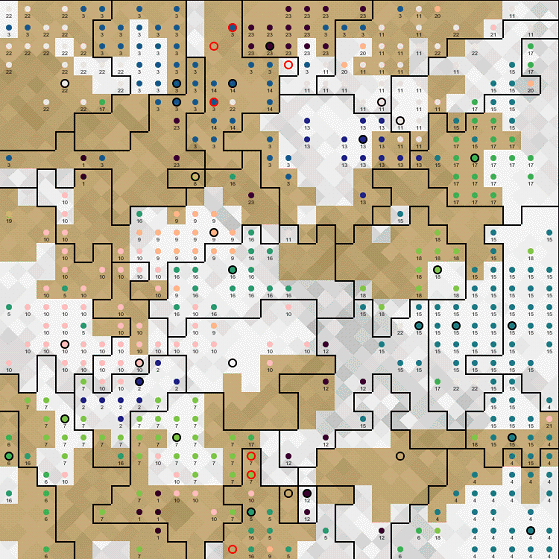GeoSim
The GeoSim model builds on a modeling tradition that dates back to the work of Bremer and Mihalka. Based on the same principles, the GeoSim framework, which originally was implemented with the Java-based RePast toolkit and is now an integral part of GROWLab, is designed to facilitate the study of state formation, nationalism and the democratic peace.
The framework uses four basic building blocks to model complex artificial worlds:
- political organizations: a state system in which states are hierarchical organizations that interact and can fight wars;
- terrain: interaction proceeds in a realistic space with geographic obstacles, such as mountains and other types of rough terrain;
- cultural map: identity formation based on a multi-dimensional substrate of cultural traits;
- national identities: nationalist behavior requires identities, which are constituted as combinations of specific cultural traits.

Bremer and Mihalka created a world of 98 contiguous hexagons, arranged in a pattern similar to chicken-coop fencing. In this model, predatory states with varying degrees of inaccurate perception attack one another when they perceive some likely advantage. States forge offensive and defensive alliances, and based on war outcomes, divide territorial and power spoils. While Bremer and Mihalka do not conduct systematic tests, they report a tendency for the simulation to produce universal empires, in which one state eventually achieves global domination.